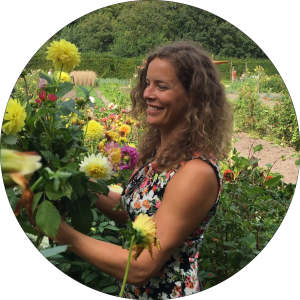The elderflower is very often a discarded flower and therefore discarded from the landscape.
The scent of this elderflower brings back a lot of childhood memories, and thus, I decided to have it in my own garden and make some lemonade myself! The elderflower is a common plant that is often found in parks, along waterways and in gardens.
It is a native shrub and really belongs in the Dutch landscape.
(Sambucus Nigra)-Common elder according to Culpeper: Elderberry is a widely used medicinal plant for the prevention and treatment of viral infections associated with colds and flu, such as fever and influenza A. Its anti-viral, antioxidant, and immunity-boosting properties are attributed to the dried flowers, which can be drunk as tea.
Caution: Do not eat the unripe berries or the fresh flowers.
Step 1: Pick the Flowers
Elderberry flowers are best picked in May and June when the morning dew has dried, and the sun is shining in a dry and sunny environment.
Pick them when they have fully bloomed without unripe bulbs because the taste is not nearly as strong then. Insects like flies and bees often take up residence in the flower heads during elderflower season and are attracted to the syrup that they produce.
To prevent them from getting into the syrup and spoiling it, you can lay the picked heads out in the sun for a few hours. Do not shake or rinse the flowers as you will lose the pollen and the delicious aromas—merely letting them sit in the sun will repel the insects naturally and ensure you get the best quality syrup.
Equipment Needed for About 4 Litres:
- 4 x Empty 1-litre Resealable Glass Bottles.
- Grater.
- 2 x Large Pans of Approximately 5-Litres.
- 1 x Tea Towel or Muslin – (Linen Tea Towel Works Best).
Ingredients:
- 40 x Elderflower Heads.
- 3 x Organic Lemons.
- 90 Grams of Citric Acid.
- 3 kg Sugar.
- 1.5-litre Water.
Step 2: Make the Elderflower Syrup
- Place the flower heads into one of the large pans.
- Grate the lemon peel and add it to the flower heads. Then peel the lemon and cut it into 1 cm wide wedges.
- Now, sprinkle the flower heads and lemon rind with citric acid.
- Use another large pan and boil the water and sugar together until the sugar is completely dissolved in the water to form a syrupy consistency. Boil this syrupy solution for 1 minute more to ensure it is completely dissolved.
- Next, pour the syrup over the ingredients in the pan and then place the lid on so that the syrup can steep overnight.
- The following day, strain the mixture through a fine cloth (linen tea towel or muslin) into the large pan and squeeze half a lemon into the lemonade.
- You can throw the used flowers and lemons on the compost heap or in the green bin once you are done.
You can pour the syrup into the sterilised bottles and store them in the fridge.
You can also pasteurise the syrup to stop fermentation. You can even pour the lemonade into plastic or plastic bottles and store them in the freezer for longer storage.
If you use glass bottles, don’t overfill them, as I know from personal experience that they don’t freeze well and will break in the freezer when the liquid expands.
Additional Serving and Gift Tips:
- Serve it diluted with cold flat or sparkling water and a lot of ice cubes for a cooling summer treat.
- Pour a small layer into a champagne glass and add prosecco, cava or champagne. This blend of bubbles tastes amazing and will certainly get you ready for a party in the evening!
- If you leave the elderflower syrup to stand a little longer, it will ferment and become slightly fizzy and alcoholic.
- You can dry the flowers instead of making syrup, and then use the dried flowers to make tea.
- Buy some small 250ml glass bottles with a good resealable cap and pour the elderflower lemonade into them. Make a label by sticking a picture of an elderflower on a piece of cardboard and attaching it to the cap with a piece of string. This makes it look very nice and is the perfect gift to give as a present.
Pasteurising
- Place a folded tea towel in the bottom of the large saucepan and put the bottle in.
- Now fill it with cold water and bring the water slowly to a boil. Leave it to gently boil for 20 minutes. Now turn the heat off and let it cool completely before removing the bottle.
- Be sure to store the bottles at room temperature until they are opened.
Sterilising Glass Bottles:
Place the empty glass bottles in a preheated oven at about 120 degrees for 20 minutes. Don’t have an oven? Then use boiled water to clean them with baking soda and let them air dry on a tea towel.
Place the empty glass bottles in a preheated oven for about 20 minutes at 120 degrees. If you don’t have an oven, then boil water in a large saucepan and wash the glass bottles with baking soda, making sure to give them a good scrub. Then let them dry thoroughly on a clean tea towel or let them air dry upside down.
Sources:
-Culpeper, N., & Foster, S. (2019). Culpeper’s Complete Herbal. Van Haren Publishing.


